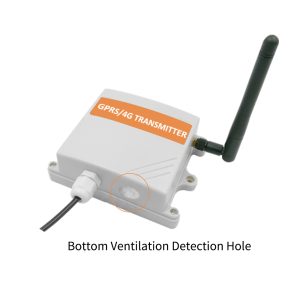Air pollution has become a global concern due to its detrimental effects on human health and the environment. Effective air quality monitoring is essential for identifying and mitigating pollution sources, as well as implementing appropriate measures to safeguard public health. Gas sensor technologies have emerged as powerful tools for real-time and continuous monitoring of air pollutants. This article provides an overview of gas sensor advancements, including sensing principles, sensor types, and their applications in air quality monitoring.
Introduction:
Air pollution poses significant risks to human health, ecosystems, and climate. It is caused by the release of various gases and particulate matter into the atmosphere from industrial processes, transportation, and natural sources. To combat air pollution, accurate and timely monitoring of air quality is crucial. Gas sensors play a vital role in this regard by detecting and quantifying the concentration of specific gases or volatile organic compounds (VOCs) present in the air.
Sensing Principles:
Gas sensors operate based on different sensing principles. Some common principles include:
a) Chemical Sensors: These sensors rely on chemical reactions between the target gas and a sensing material. The interaction causes a change in electrical conductivity, resistance, or optical properties, which can be measured and correlated with the gas concentration.
b) Optical Sensors: These sensors utilize the absorption, reflection, or scattering of light by the target gas to determine its concentration. Optical sensors can employ techniques such as infrared spectroscopy, ultraviolet spectroscopy, or laser-based absorption.
c) Electrochemical Sensors: These sensors employ electrochemical reactions between the target gas and an electrode to generate an electrical signal. The magnitude of the signal corresponds to the gas concentration.
d) Metal Oxide Sensors: Metal oxide sensors detect gases based on the changes in electrical conductivity resulting from the gas adsorption onto the sensing material's surface.
Gas Sensor Types:
Gas sensors are available in various types, each with its advantages and limitations. Some commonly used gas sensor types include:
a) Non-Dispersive Infrared (NDIR) Sensors: These sensors utilize infrared light absorption to detect specific gases such as carbon dioxide (CO2), methane (CH4), and nitrous oxide (N2O). NDIR sensors offer high selectivity and accuracy.
b) Electrochemical Sensors: Electrochemical sensors are widely used for measuring toxic gases such as carbon monoxide (CO), nitrogen dioxide (NO2), and ozone (O3). They are known for their fast response times and sensitivity.
c) Metal Oxide Semiconductor Sensors (MOS): MOS sensors are cost-effective and suitable for detecting a wide range of gases, including VOCs. They find applications in indoor air quality monitoring and industrial safety.
d) Photoionization Detectors (PID): PID sensors are widely used for VOC monitoring, as they can detect a broad range of compounds. They operate based on the ionization of gas molecules by UV radiation.
Advancements in Gas Sensor Technologies:
a) Miniaturization: Recent advancements have led to the development of miniaturized gas sensors, making them portable and suitable for personal exposure monitoring. Miniaturization also enables the integration of multiple sensors into compact devices for simultaneous measurements of multiple gases.
b) Selectivity and Sensitivity: Researchers are continuously improving the selectivity and sensitivity of gas sensors to discriminate between different gases and measure trace pollutant concentrations accurately. This is achieved through advances in sensing materials, nanotechnology, and surface functionalization techniques.
c) Wireless Connectivity and IoT Integration: Gas sensors with wireless connectivity allow real-time data transmission, enabling remote monitoring and centralized data collection. Integration with the Internet of Things (IoT) facilitates the creation of interconnected networks of sensors, enhancing data analysis and decision-making processes.
d) Smart and Autonomous Systems: Smart gas sensors equipped with advanced algorithms and data processing capabilities enable autonomous operation, data analysis, and event detection. These systems can provide real-time alerts and trigger appropriate response actions based on predefined thresholds or pollutant patterns.
Applications of Gas Sensors in Air Quality Monitoring:
a) Outdoor Air Quality Monitoring: Gas sensors are extensively used in outdoor air quality monitoring networks to measure pollutants such as nitrogen oxides (NOx), sulfur dioxide (SO2), ozone (O3), and particulate matter (PM). These measurements help assess air pollution levels, identify pollution sources, and evaluate the effectiveness of pollution control measures.
b) Indoor Air Quality (IAQ) Monitoring: Indoor environments can be a significant source of pollutants, impacti
 : +86 155 8830 2704
: +86 155 8830 2704 : jxdziot@gmail.com
: jxdziot@gmail.com
